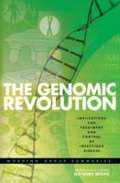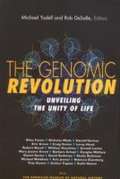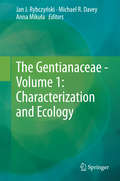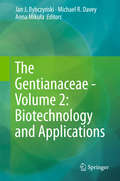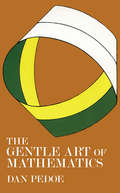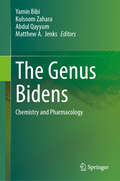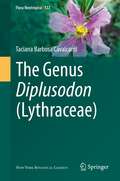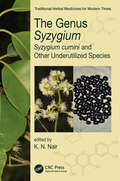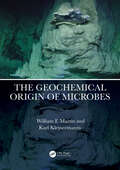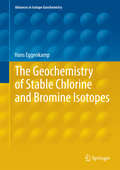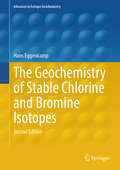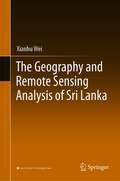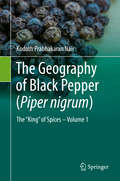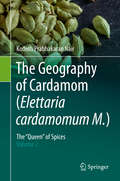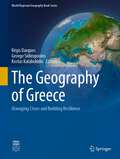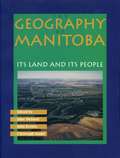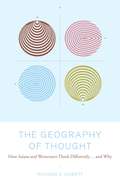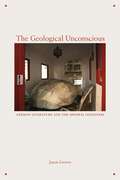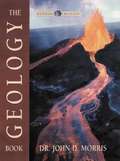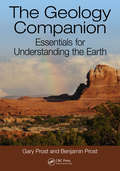- Table View
- List View
The Genomic Revolution: Implications For Treatment And Control Of Infectious Disease
by The National AcademiesThe 2005 conference, "The Genomic Revolution: Implications for Treatment and Control of Infectious Disease," attracted scientists, engineers, and medical researchers to work on new interdisciplinary responses using genomics to treat and control infectious diseases. Eleven conference working groups gave the participants eight hours to develop new research approaches to problems in infectious disease using genomics. Among the challenges were designing a new device to detect viral and bacterial pathogens; how best to use $100 million to prevent a future pandemic flu outbreak; how to improve rapid response to an outbreak of disease and reduce the cost of diagnostic tests; and how to sequence an individual's genome for under $1,000. Representatives from public and private funding organizations, government, industry, and the science media also participated in the working groups. This book provides a summary of the conference working groups. For more information about the conference, visit http://www.keckfutures.org/site/pageserver?pagename=past_genomics_conference_nov_2005www.keckfutures.org/genomics. The National Academies Keck Futures Initiative was launched in 2003 to stimulate new modes of scientific inquiry and break down the conceptual and institutional barriers to interdisciplinary research. The National Academies and the W.M. Keck Foundation believe considerable scientific progress and social benefit will be achieved by providing a counterbalance to the tendency to isolate research within academic fields. The Futures Initiative is designed to enable researchers from different disciplines to focus on new questions upon which they can base entirely new research, and to encourage better communication between scientists as well as between the scientific community and the public. Funded by a $40 million grant from the W.M. Keck Foundation, the National Academies Keck Futures Initiative is a 15-year effort to catalyze interdisciplinary inquiry and to enhance communication among researchers, funding agencies, universities, and the general public with the object of stimulating interdisciplinary research at the most exciting frontiers. The Futures Initiative builds on three pillars of vital and sustained research: interdisciplinary encounters that counterbalance specialization and isolation; the identification and exploration of new research topics; and communication that bridges languages, cultures, habits of thought, and institutions. Toward these goals, the National Academies Keck Futures Initiative incorporates three core activities each year: Futures conferences, Futures grants, and National Academies Communication Awards.
The Genomic Revolution: Unveiling The Unity Of Life
by Rob Desalle Michael YudellFrom the discoveries of Watson and Crick to the appearance of Dolly the Sheep, the last fifty years have ushered in a revolution of knowledge in how organisms develop, function, and replicate. Scientists are now engaged in an epic task that will catapult the revolution to new heights: the sequencing of the human genome. Consider the scope of such a discovery. How different are we from one another? Does race have a scientific meaning? Is there such a thing as a disease gene? What are the potential risks of genetically modified food? Does a clone have a soul? The Human Genome Project will inevitably lead to landmark changes in medicine, agriculture, and the study of evolution--and will ultimately define the course of human history. The Genomic Revolution: Unveiling the Unity of Life takes readers on a fascinating journey through genomics--from the basic presentation of ideas about heredity through the essential principles of molecular biology, including an exploration of the ethical implications of the genome project for individuals and society. Some of the world's leading experts in genomics--Harold Varmus, Leroy Hood, Daniel Kevles, and Craig Venter, to name just a few--contribute their assessments of the state of current scientific research. Written for anyone wondering why we are the way we are, The Genomic Revolution is a timely and important collection that spans the science, the promise, and the potential pitfalls of a field moving so quickly that its achievements may alternately delight and trouble us, but almost always surprise us.
The Gentianaceae - Volume 1: Characterization and Ecology
by Michael R. Davey Jan J. Rybczyński Anna MikułaThis is the first of two volumes on Gentianaceae. Comprising twelve chapters, it centres upon the characterization and ecology of Gentianaceae worldwide, with emphasis on the application of molecular and cytological approaches in relation to taxonomy. The first three chapters consider the classification of the family and review the advances in research since the earlier revision published in 2002, which resulted in the reclassification of some plants and the naming of new genera. The next chapter provides the most comprehensive report to date of the systematics of South American Neotropical woody Gentians. Other reviews include details of the Gentianaceae in Eastern Europe. The key biochemical steps that result in the diversity of Gentian flower colors, the cytology of European species and an historical account of the importance of Gentians in herbal medicines are also covered. Furthermore, an analysis of gene expression in overwintering buds is presented, discussing several aspects of plant taxonomy, phenotypic characteristics, phylogeography and pedigree. Two contributions highlight the importance of Gentians in India, and the last chapter presents evidence for the importance of Glomeromycota in developing arbuscular mycorrhizal associations with the roots of Gentians. This volume provides the basis for the biotechnological approaches that are considered in the companion book The Gentianaceae - Volume 2: Biotechnology and Applications.
The Gentianaceae - Volume 2: Biotechnology and Applications
by Michael R. Davey Jan J. Rybczyński Anna MikułaThis book, the second of two volumes on the Gentianaceae, is devoted to aspects of biotechnology and their applications. It consists of 18 chapters and covers micropropagation by means of organogenesis or somatic embryogenesis, and single cell manipulation of various species belonging to the horticultural genera Blakstonia, Centaurium, Gentiana, Gentianalla and Swertia. Furthermore, the application of somatic cell hybridization, haploidization and genetic variation arising from tissue and organ culture for the production of plants with new horticultural traits, such as new flower colors or sizes, or with special pharmaceutical values, is treated in detail. Also discussed are molecular markers that facilitate breeding and cultivar identification, the preservation of genetic resources by cryopreservation, the postharvest physiology of cut Gentian flowers and potted plants, and different analytical methods for the evaluation of Gentians as sources of secondary metabolites, such as xanthones and flavonoids, secoiridoids and C-glucoflavonoids, and their positive impacts on human health. This volume as well as the companion book The Gentianaceae - Volume 1: Characterization and Ecology will serve as key reference works for scientists and students in the fields of botany, plant breeding, biotechnology and horticulture, as well as professional gardeners.
The Gentle Art of Mathematics
by Dan PedoeMathematical games, probability, the question of infinity, topology, how the laws of algebra work, problems of irrational numbers, and more. 42 figures.
The Genus Bidens: Chemistry and Pharmacology
by Matthew A. Jenks Abdul Qayyum Yamin Bibi Kulsoom ZaharaThis contributed volume on phytochemistry and pharmacology of the genus Bidens covers the chemical constituents and biological activities of this plant group in detail. Bidens is an important genus of the Asteraceae family, which is one of the dominant plant families globally, contributing medicinal species. It is a diverse genus of weedy herbs with roughly 230 species. Members of this genus have been listed in Oriental Materia Medica as remedies for rheumatoid arthritis, sprains, insect and scorpion stings, diarrhea, dysentery, hepatitis, acute nephritis, stomachaches, and sore throats. Despite its medicinal properties, the chemistry and pharmacology of this genus are disorganized. The aim of this book is to present comprehensive information on the chemical constituents, nutraceutical and ethnomedical uses, as well as the biological and pharmacological effects and toxicity of this plant, based on 218 literary sources reported over 40 years. Major chemical constituents (including 301 compounds) belonging to polyacetylenes, polyacetylene glycosides, flavonoids, flavone glycosides, aurones, chalcones, okanin glycosides, phenolic acids, terpenes, pheophytins, fatty acids, and phytosterols have been identified or isolated from different parts of this plant. Many of them are considered bioactive compounds potentially responsible for pharmacological actions. The book will appeal to a wide range of readers, including researchers, botanists, and students studying the phytochemistry and pharmacology of medicinal plants. It may also interest pharmaceutical companies seeking to develop new drugs based on the chemical constituents of Bidens.
The Genus Diplusodon (Flora Neotropica #122)
by Taciana Barbosa CavalcantiThis volume is a monograph of the genus Diplusodon (Lythraceae), written by the world authority on this plant group. Diplusodon is a monophyletic genus of shrubs and subshrubs, with showy, 6-merous, actinomorphic flowers, and floral tubes on which the sepals alternate with conspicuous epicalyx segments. The capsular fruit contains winged seeds and, uniquely for the family, is divided by a bipartite placenta with two semi-lunate septa. Diplusodon is the second largest genus in the Lythraceae and occurs mostly in the Cerrado Biome, the floristically diverse savannah that covers more than two million km2 of the Central Brazilian Plateau, extending west into Bolivia, south to Paraguay and east to the Caatinga. A total of 104 species and eight varieties are recognized in the genus, for which 46 lectotypes, one neotype, one new status and one new combination are designated, nine new species are described, and 15 taxa are placed in synonymy. New information on floral and vegetative morphology, pollen, cytology, chemistry, floral biology, and habitat are provided for the genus. In addition, keys to the species are accompanied by descriptions, illustrations, distribution maps, and assignment of conservation status.
The Genus Syzygium: Syzygium cumini and Other Underutilized Species (Traditional Herbal Medicines for Modern Times)
by K. N. NairSyzygium is a well-known source of the globally traded clove as well as the widely cultivated jambolan, water apple, rose apple, wax apple, mountain apple, and several other underutilized species. These plants have multiple uses as edible fruits, medicine, spice, food colorants, and flavorings. The Genus Syzygium: Syzygium cumini and Other Underutilized Species provides an updated, comprehensive account of S. cumini and other underutilized species from a multidisciplinary perspective. This book covers all relevant aspects including the botany, systematics, phylogeny, life history, traditional medicinal uses, phytochemical constituents, pharmacology, pharmacopeia standards, horticulture, genetic resource conservation, biocontrol, and bioremediation values. It demonstrates how Syzygium cumini and other underutilized species hold great prospect for global pharmaceutical and horticultural trade. The Genus Syzygium will serve as the standard reference for a broad range of researchers interested in the various uses of S. cumini and eight underutilized Indo-Malaysian and Australasian species of Syzygium.
The Geochemical Origin of Microbes
by William F. Martin Karl KleinermannsThis is a textbook covering the transition from energy releasing reactions on the early Earth to energy releasing reactions that fueled growth in the first microbial cells. It is for teachers and college students with an interest in microbiology, geosciences, biochemistry, evolution, or all of the above. The scope of the book is a quantum departure from existing “origin of life” books in that it starts with basic chemistry and links energy-releasing geochemical processes to the reactions of microbial metabolism. The text reaches across disciplines, providing students of the geosciences an origins/biology interface and bringing a geochemistry/origins interface to students of microbiology and evolution. Beginning with physical chemistry and transitioning across metabolic networks into microbiology, the timeline documents chemical events and organizational states in hydrothermal vents – the only environments known that bridge the gap between spontaneous chemical reactions that we can still observe in nature today and the physiology of microbes that live from H2, CO2, ammonia, phosphorus, inorganic salts and water. Life is a chemical reaction. What it is and how it arose are two sides of the same coin.Key Features Provides clear connections between geochemical reactions and microbial metabolism Focuses on chemical mechanisms and transition metals Richly illustrated with color figures explaining reactions and processes Covers the origin of the Earth, the origin of metabolism, the origin of protein synthesis and genetic information as well as the escape into the wild of the first free-living cells: Bacteria and Archaea
The Geochemistry of Stable Chlorine and Bromine Isotopes
by Hans EggenkampThis book provides detailed information on the history, analysis and applications of chlorine and bromine isotope geochemistry. Chlorine and bromine are geochemically unique as they prefer to exist as single charged negative ions. For this reason isotope fractionation reflects mostly processes that are not related to changes in the redox state and this fractionation is generally modest. The book will describe the processes that are most easily detected using these isotopes. Also isotope variations, and processes that cause them, measured in oxidised species such as perchlorates and in organic molecules will be described in this book.
The Geochemistry of Stable Chlorine and Bromine Isotopes (Advances in Isotope Geochemistry)
by Hans EggenkampThis book provides detailed information on the history, analysis and applications of chlorine and bromine isotope geochemistry. Chlorine and bromine are geochemically unique as they prefer to exist as single charged negative ions. For this reason isotope fractionation reflects mostly processes that are not related to changes in the redox state and this fractionation is generally modest. The book will describe the processes that are most easily detected using these isotopes. Also isotope variations, and processes that cause them, measured in oxidised species such as perchlorates and in organic molecules will be described in this book.
The Geochemistry of Stable Chlorine and Bromine Isotopes (Advances in Isotope Geochemistry)
by Hans EggenkampThis book provides detailed information on the history, analysis and applications of chlorine and bromine isotope geochemistry. This largely extended 2nd edition has incorporated most research published between 2014 and 2023, and contains also significantly more information on the earliest experimental data obtained during the early 20th century. This 2nd edition describes isotope studies done on terrestrial samples, and also incorporates the fascinating chlorine (and bromine) isotope ratio investigations obtained from extraterrestrial and astronomical studies, and thus it shows the full extent of the current status of knowledge of this subject.
The Geographic Mosaic of Coevolution
by John N. ThompsonCoevolution—reciprocal evolutionary change in interacting species driven by natural selection—is one of the most important ecological and genetic processes organizing the earth's biodiversity: most plants and animals require coevolved interactions with other species to survive and reproduce. The Geographic Mosaic of Coevolution analyzes how the biology of species provides the raw material for long-term coevolution, evaluates how local coadaptation forms the basic module of coevolutionary change, and explores how the coevolutionary process reshapes locally coevolving interactions across the earth's constantly changing landscapes. Picking up where his influential The Coevolutionary Process left off, John N. Thompsonsynthesizes the state of a rapidly developing science that integrates approaches from evolutionary ecology, population genetics, phylogeography, systematics, evolutionary biochemistry and physiology, and molecular biology. Using models, data, and hypotheses to develop a complete conceptual framework, Thompson also draws on examples from a wide range of taxa and environments, illustrating the expanding breadth and depth of research in coevolutionary biology.
The Geography and Remote Sensing Analysis of Sri Lanka
by Xianhu WeiThis book presents a survey, dynamic monitoring and comprehensive analysis of Sri Lanka’s land, vegetation, surface water, ocean and other environmental resources, as well as its economic, transportation, urban, agricultural and tourism development. It offers readers accurate, systematic and comprehensive information on Sri Lanka’s ecological setting and socio-economic development. It also sheds light on policies for the protection of the environment and biodiversity.
The Geography of Black Pepper (Piper nigrum): The "King" of Spices – Volume 1
by Kodoth Prabhakaran NairThis book considers all aspects of black pepper from its growth, as a flowering vine, to how the dried fruit (peppercorn) is used as a spice and traded as a commodity. It is the economic mainstay of several India states and, principally, in Kerala State, with the Indian subcontinent being the largest black pepper producer. Indonesia has also emerged as a large producer of black pepper. Black pepper commands a leading position among the spices and has an immense commercial importance to world trade, finding its way onto the dining table of millions around the world, on the European and North American continents, and Japan. The use of black pepper ranges from a simple dietary component and flavour enhancer, to that of a spice with huge pharmacological benefits.
The Geography of Cardamom (Elettaria cardamomum M.): The "Queen" of Spices – Volume 2
by Kodoth Prabhakaran NairThis book catalogues the multi-scale impact of agronomy and economy on Cardamom, known as the “Queen” of spices. Cardamom is the second most important spice crop in the world, after Black pepper, known as the “King” of spices. Spices were the symbols of luxury and royalty, and cardamom was used in the manufacture of perfumes during the Greek and Roman times. It became one of the most important Oriental spices used in both Greek and Roman cuisine as well as its pharmacological applications. The book is divided into 15 chapters and concentrates on aspects of cardamom production and processing, the taxonomic aspects of cardamom, chemistry, pathology, entomology and is concluded with the future of cardamom. Special emphasis is given to the utility of “The Nutrient Buffer Power Concept”, a soil management technique in precise fertilizer management, especially with regard to Potassic fertilizers in cardamom production.
The Geography of Contemporary China (World Regional Geography Book Series)
by Peijun Shi Shunlin Liang Jing’ai WangThis textbook provides a comprehensive and very detailed insight into Chinese Contemporary Geography in English. It documents the geographical issues associated with China's rapid growth. Since initiating the reforms and open policy, China has achieved tremendous success. China's rapid growth is now a driving force in the global economy and is achieving unprecedented rates of poverty reduction. However, China also faces a number of sustainability and emerging challenges associated with rapid growth such as growing regional disparities in terms of per capita income and social-economic development, sustainable resource development, and issues related to regional and global economic integration. In addition, rapid economic growth has also brought about major challenges such as resource shortages, ecological and environmental destruction, land degradation and frequent disasters. This book presents the authors’ reflections. This lavishly illustrated book covers physical geography, history, and economic and political systems of the world's most populous country. The major focus is on geographical issues in China's contemporary development: agriculture, population, urbanization, resource and energy, and environment. The lead author of the book has taught relevant courses in China for three decades, and authored and edited multiple textbooks for Chinese students. This book will appeal to undergraduate students of geography and related disciplines with a regional focus on China and to the general reader who wants to learn different geographical aspects of modern China with little academic background in geography.
The Geography of Greece: Managing Crises and Building Resilience (World Regional Geography Book Series)
by Régis Darques George Sidiropoulos Kostas KalabokidisDuring the last few years, Greece has become a subject of increasing attention worldwide. Once praised for its ability to innovate and reform during the EU integration process, applauded for its remarkable job in managing the 2004 Olympics, the country fell into a financial crisis of unprecedented magnitude in 2008. Much has been said on this matter, and amid the morass of information a staggering number of untruths have been disseminated.In fact, the challenges of vulnerability and the paradigms of adaptation go way beyond finance and economy in Greece. Mega-fires, earthquakes, landslides and floods, migrations, sociopolitical upheavals, and armed conflicts generate emergency situations repeatedly. Because of its bridging role between natural and social sciences, geography can provide insights into the entire breadth of hazardous and chaotic events driving adaptation and change. Against all these threats, Greece has developed an enhanced resilience capacity. The purpose of this book is to help unravel the complexities of a fascinating country beyond clichés.This book is intended for students, researchers, scholars, and engineers interested in geography, land planning, urban studies, and environmental management. The crises issue intended as a guideline allows widening the audience to include the media, governmental and non-governmental agencies, and the public at large.
The Geography of Manitoba: Its Land and its People
by Christoph Stadel John Welsted John EverittManitoba is more than one of Canada's three prairie provinces. Encompassing 649,950 square kilometres, its territory ranges from Canadian Shield to grassland, parkland, and subarctic tundra. Its physical geography has been shaped by ice-age glaciers, while its human geography reflects the influences of its various inhabitants, from the First Nations who began arriving over 9,000 years ago, to its most recent immigrants. This fascinating range of geographical elements has given Manitoba a distinct identity and makes it a unique area for study. Geography of Manitoba is the first comprehensive guide to all aspects of the human and physical geography of this unique province. Representing the work of 47 scholars, and illustrated with over 200 maps, diagrams, and photographs, it is divided into four main sections, covering the major areas of the province's geography: Physical Background; People and Settlements; Resources and Industry; and Recreation.As well as studying historical developments, the contributors to Geography of Manitoba analyse recent political and economic events in the province, including the effect of federal and provincial elections and international trade agreements. They also comment on future prospects for the province, considering areas as diverse as resource management and climatic trends.
The Geography of Thought
by Richard NisbettEveryone knows that while different cultures may think about the world differently, they use the same equipment for doing their thinking. Everyone knows that whatever the skin color, nationality, or religion, every human being uses the same tools for perception, for memory, and for reasoning. Everyone knows that a logically true statement is true in English, German, or Hindi. Everyone knows that when a Chinese and an American look at the same painting, they see the same painting.But what if everyone is wrong?When psychologist Richard E. Nisbett showed an animated underwater scene to his American students, they zeroed in on a big fish swimming among smaller fish. Japanese subjects, on the other hand, made observations about the background environment -- and the different "seeings" are a clue to profound underlying cognitive differences between Westerners and East Asians. For, as Professor Nisbett shows in The Geography of Thought, people actually think about -- and even see -- the world differently because of differing ecologies, social structures, philosophies, and educational systems that date back to ancient Greece and China and that have survived into the modern world. As a result, East Asian thought is "holistic" -- drawn to the perceptual field as a whole and to relations among objects and events within that field. By comparison to Western modes of reasoning, East Asian thought relies far less on categories or on formal logic; it is fundamentally dialectic, seeking a "middle way" between opposing thoughts. By contrast, Westerners focus on salient objects or people, use attributes to assign them to catergories, and apply rules of formal logic to understand their behavior. The Geography of Thought documents Professor Nisbett's groundbreaking international research in cultural psychology, a series of comparative studies both persuasive in their rigor and startling in their conclusions, addressing questions such as: Why did the ancient Chinese excel at algebra and arithmetic, but not geometry, the brilliant achievement of such Greeks as Euclid? Why do East Asians find it so difficult to disentangle an object from its surroundings? Why do Western infants learn nouns more rapidly than verbs, when it is the other way around in East Asia? What are the implications of these cognitive differences for the future of international politics? Do they support a Fukuyamaesque "end of history" scenario or a Huntingtonian "clash of civilizations"?From feng shui to metaphysics, from comparative linguistics to economic history, a gulf separates the children of Aristotle from the descendants of Confucius. At a moment in history when the need for cross-cultural understanding and collaboration have never been more important, The Geography of Thought offers both a map to that gulf and a blueprint for a bridge that might be able to span it.
The Geography of Thought: How Asians and Westerners Think Differently... and Why
by Richard E. NisbettWhen psychologist Richard E. Nisbett showed an animated underwater scene to his American students, they zeroed in on a big fish swimming among smaller fish. Japanese observers instead commented on the background environment -- and the different "seeings" are a clue to profound cognitive differences between Westerners and East Asians. As Nisbett shows in The Geography of Thought, people think about -- and even see -- the world differently because of differing ecologies, social structures, philosophies, and educational systems that date back to ancient Greece and China. The Geography of Thought documents Professor Nisbett's groundbreaking research in cultural psychology, addressing questions such as: Why did the ancient Chinese excel at algebra and arithmetic, but not geometry, the brilliant achievement of such Greeks as Euclid? Why do East Asians find it so difficult to disentangle an object from its surroundings? Why do Western infants learn nouns more rapidly than verbs, when it is the other way around in East Asia? At a moment in history when the need for cross-cultural understanding and collaboration have never been more important, The Geography of Thought offers both a map to that gulf and a blueprint for a bridge that might be able to span it.
The Geography of the United States
by Core Knowledge FoundationFrom the CORE KNOWLEDGE FOUNDATION, which brought you the popular "What Your ___ Grader Needs to Know" series. THE GEOGRAPHY OF THE UNITED STATES reinforces map and globe skills as young readers learn about the geographic characteristics of different regions of the United States: New England, Mid-Atlantic, South, Midwest, Great Plains, Rocky Mountain, Southwest, and West Coast. The book explores each region's climate, natural resources, culture, and other distinctive characteristics. Paperback. 77 pages. ** Part of the CORE KNOWLEDGE HISTORY AND GEOGRAPHYTM (CKHG) series in world and American history and geography, integrating topics in civics and the arts. CKHG books offer engagingly written text with many color illustrations, maps, vocabulary sidebars, and a glossary. Related materials (Teacher Guides and Timeline Cards) are also published by the Core Knowledge Foundation. In general, CKHG books are appropriate for young readers from the upper elementary grades through middle school.
The Geological Unconscious: German Literature and the Mineral Imaginary
by Jason GrovesAlready in the nineteenth century, German-language writers were contending with the challenge of imagining and accounting for a planet whose volatility bore little resemblance to the images of the Earth then in circulation. The Geological Unconscious traces the withdrawal of the lithosphere as a reliable setting, unobtrusive backdrop, and stable point of reference for literature written well before the current climate breakdown.Through a series of careful readings of romantic, realist, and modernist works by Tieck, Goethe, Stifter, Benjamin, and Brecht, Groves elaborates a geological unconscious—unthought and sometimes actively repressed geological knowledge—in European literature and environmental thought. This inhuman horizon of reading and interpretation offers a new literary history of the Anthropocene in a period before it was named.These close readings show the entanglement of the human and the lithic in periods well before the geological turn of contemporary cultural studies. In those depictions of human-mineral encounters, the minerality of the human and the minerality of the imagination become apparent. In registering libidinal investments in the lithosphere that extend beyond Carboniferous deposits and beyond any carbon imaginary, The Geological Unconscious points toward alternative relations with, and less destructive mobilizations of, the geologic.
The Geology Book
by John D. MorrisThe Geology Book explores the physical features of the planet from core to crust, explaining earthquakes, volcanoes, geysers, rock layers, and the age of the earth.
The Geology Companion: Essentials for Understanding the Earth
by Gary Prost Benjamin ProstThis practical guidebook provides a basic grounding in the principles of geology and explains how to apply them. Using this book, readers will be able to figure out whether they are standing on an ancient seafloor, coal swamp, or sand dune. They will be able to determine the geologic hazards in their neighborhood, where to look for fossils and minerals, or where best to drill a water well. In plain English, The Geology Companion sheds light on the processes that shape the earth and how geology affects people in their daily lives.
